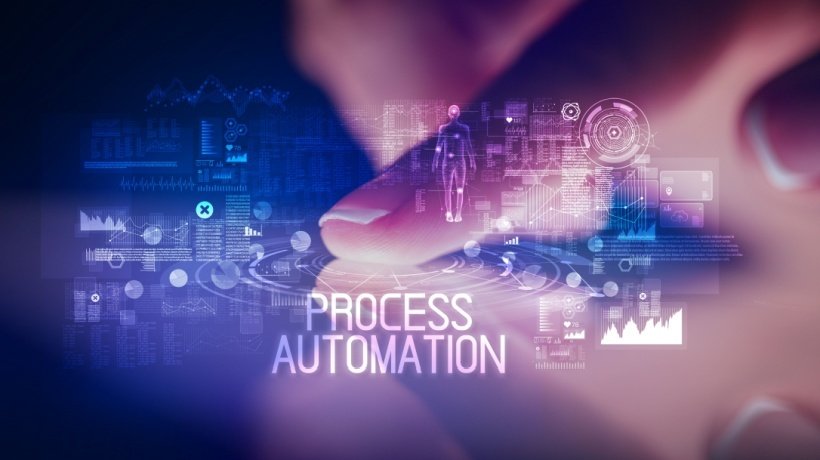4 Business Models That Redefine L&D - What Is A Business Model?
A business model makes it possible to highlight the added value to the organisation in terms of income and expenditure, or in other non-financial terms, and the factors that influence this.
Alex Osterwalder offers a useful definition:
A business model describes the value an organization offers to various customers and portrays the capabilities and partners required for creating, marketing, and delivering this value and relationship capital with the goal of generating profitable and sustainable revenue streams.
It is logical for organisations to assess the different components of their primary processes based on the business model, including determining measurable added value. This increasingly applies at department level, and L&D is no exception: L&D is expected to show the value it creates for the organisation. The 4 L&D business models described here support the transition from learning to business value.
4 L&D Business Models
The 70:20:10 Institute’s new book makes a distinction between four L&D business models. (Arets, J. e.a. in press)
It draws horizontal and vertical axes for L&D as a function of the organisation. The horizontal axis represents the continuum between HRD (Human Resource Development) and the core business , and the vertical one the continuum between strategy and operations. The two axes create four quadrants:
- Learning-focused L&D business models.
- Order Taker.
- Learning Enabler.
- Business-focused L&D business models.
- Performance Enabler.
- Value Creator.
See fig. 1.

Fig. 1 Four business models for L&D.
Business Model 1: Order Taker
The Order Taker is responsible for customer focus in terms of providing formal learning solutions. Under the motto “If you want it, we’ve got it”, they ensure that learning solutions are available to match client demand.
The Order Taker also makes the service provision as simple and efficient as possible, offering no complex training analysis, theoretical models or evaluations, but a detailed professional catalog of the formal learning solutions available.
The Order Taker has the budget to facilitate training in organizations and to take the burden from management when it comes to learning issues. This mix of activities and services makes the Order Taker attractive to management and training participants alike, thanks also to the inherent pragmatism, decisiveness and strong operational focus.
One disadvantage for the Order Taker is the near absence of evaluations to demonstrate business impact. Expenditure is justified based on an overview of costs and the resulting participation in online and offline learning activities. Management regards the Order Taker as a cost center.
Business Model 2: Learning Enabler
Educational advice forms the core of the service offered by the Learning Enabler. The Learning Enabler is responsible for organizing the intake, analysis, implementation and evaluation processes required to maintain the professional quality of learning provision. The Learning Enabler engages in dialogue with the client, using educational analysis to establish whether a formal or other learning solution is the best response to the question. Effective learning analysis also establishes the target group’s needs and matches the program to these needs.
In practice, the Learning Enabler usually cannot answer requests from clients with a clear ‘no’, sometimes against their own better judgment. The Learning Enabler also tends to be dependent on the client’s decision as to whether to go forward with the recommended learning solution or not.
As well as a professional catalogue, the Learning Enabler often also works within learning landscapes or a learning and performance ecosystem. In practice, the main strength of the Learning Enabler lies in the provision of professional, formal online and offline learning. The focus is clearly strategic, ensuring that the learning provision reflects the organisation’s overall priorities. This is the best way of reconciling learning with organisational development.
The Learning Enabler tends to use the Kirkpatrick and Phillips model to express the effectiveness of solutions in terms of learning values (Kirkpatrick levels 1 to 3), business value (Kirkpatrick level IV, 2007) or return on investment (Phillips, 2007). In practice, however, it is difficult for the Learning Enabler to demonstrate business impact in more than 20 percent of the learning solutions offered. For this reason, senior management also regards the Learning Enabler as a cost centre. (Linkedin, 2017)
Business Model 3: Performance Enabler
The Performance Enabler implements the operational and other priorities of the business. The services provided focus entirely on helping teams and individuals to work better, make continuous improvements, and learn from these. The emphasis on the business is the result of adopting a perspective on working and learning that is not purely educational.
The Performance Enabler analyses the organisation’s systems and does not regard learning solutions as the only response to business problems or opportunities. The Performance Enabler is closely involved in the following roles within the 70:20:10 reference model:
- Performance Detective.
- Performance Architect (with an operational focus).
- Performance Master Builder (Arets, J, e.a. 2015).
The Learning Enabler is less effective in the Performance Game Changer and Performance Tracker roles. This is partly why they cannot always demonstrate business impact. However, senior management regards the Performance Enabler as on the way to being a revenue center.
Business Model 4: Value Creator
By expanding the service to the whole spectrum of 70:20:10 provision, the Value Creator implements management’s strategic priorities, offering more than formal learning solutions, and co-creating with management and best performers to make a measurable contribution to improving organizational performance.
The Value Creator acts fully in line with the 70:20:10 model by referring not to the five roles defined to utilize the model, but to the 70:20:10 methodology. The five roles form the foundation of the methodology and, initially through the Performance Detective role, enable business alignment and value.
The Performance Architect role provides the 100 solutions at system level, and the Performance Builder role contributes to the required mix of formal learning and workplace business solutions, with formal learning no longer being the dominant solution as it is for both the Order Taker and Learning Enabler business models.
The Performance Game Changer role within the Value Creator model is responsible for implementing business solutions, and the Performance Tracker role takes measurements based on a plan agreed with management and using business KPIs alone. Everything the Value Creator does demonstrate measurable business impact in the form of business cases or quantified ROI.
The Value Creator is a profit center for management, with income and value-add exceeding expenditure. This is also the norm for all other parts of the organization required to contribute to its profitability.
4 Stereotypical Business Models
These models are recognisable stereotypes. In practice, there are obviously blends of Order Taker and Learning Enabler, and of Performance Enabler and Value Creator. The Performance Enabler and Value Creator may also contain components of the Order Taker or Learning Enabler. For example, where learning solutions are developed and deployed to meet regulatory or compliance requirements, provided by the Performance Enabler and Value Creator.
In our practice, we have presented these four business models to hundreds of L&D professionals from every continent. Surprisingly, they enjoy a very high degree of recognition, and L&D professionals are highly motivated to move towards the roles of Performance Enabler and Value Creator.
No Fixed Order
The four L&D business models are not defined to be prescriptive. For example, L&D leadership may make a deliberate choice to remain within the Order Taker model for one or two years while it reviews options for change. An Order Taker may also move immediately to the right, either directly to Value Creator or indirectly via the Performance Enabler. There is no fixed path, profile, or sequence, though we do recommend L&D moves towards the business. This offers opportunities to shift towards being a profit centre, which is good for any part of an organisation, not least L&D.
Functions Of The Business Models
We do not intend to express any value judgements concerning these four models. Their most important function is as a framework to help engage in dialogue so that each L&D department can determine the difference, in its own context, between the current and desired models.
The publication of our new book will make available the following relevant functions of the four models:
- Diagnosis (assessing the current business model and comparing it to the target model).
- Benchmarking the four models, and expressing as a percent age where your organization is in the current model.
- Insight into the factors influencing the four models.
- Drawing up the roadmap to move from current to desired situation.
Want To Participate In The New Book?
The four business models are the subjects of the new book from the 70:20:10 Institute. We would welcome your contributions:
- Stories about your business models.
- Examples of good practice.
- Ideas, tips, and pitfalls.
- Self-assessments to map current and target business models.
- Any other personal input.
Please let us have these in plenty of time, as the book containing all the online and offline solutions will be published simultaneously in Dutch and English this autumn.
Bibliography
- Arets, J. e.a (in press). New Value Creators. 4 Business Models That Redefine L&D With 70:20:10. Maastricht: Sutler Media B.V.
- Arets, J.,Jennings, C. & V. Heijnen (2015). 70:20:10 Towards 100% performance. Maastricht: Sutler Media B.V.
- Kirkpatrick, D.L. & D.J. Kirkpatrick (2007). Implementing the four levels. San Francisco: Berrett-Koehler.
- Linkedin (2017). 2017 Workplace Learning report. How modern L&D pros are tackling top challenges. Download april 5, 2017 van: learning.linkedin.com
- Phillips, J.J. & P. Phillips (2007). Show me the money. How to determine ROI in People, Projects and Programs.


![Rethinking The L&D Operating Model: Aligning Strategy, Talent, And Technology [eBook Launch]](https://cdn.elearningindustry.com/wp-content/uploads/2024/12/Rethinking-LD-Operating-Models-eBook-Launch.jpg)






